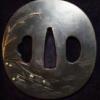Err... there was not any kanji translation in that topic... Jean, you probably meant some other case?
Well, I totally support this educational goal, but I would very much like to direct the newcomers to a resource having handwritten kanji examples like we see in the real Mei. Trying to translate a long, chippy Showato Mei using only printed forms of kanji as a reference can be highly frustrating... been there... So, anybody, do we have additional resources in the internet, something simple resembling the kanji pages on the Yumoto's book?
Veli



